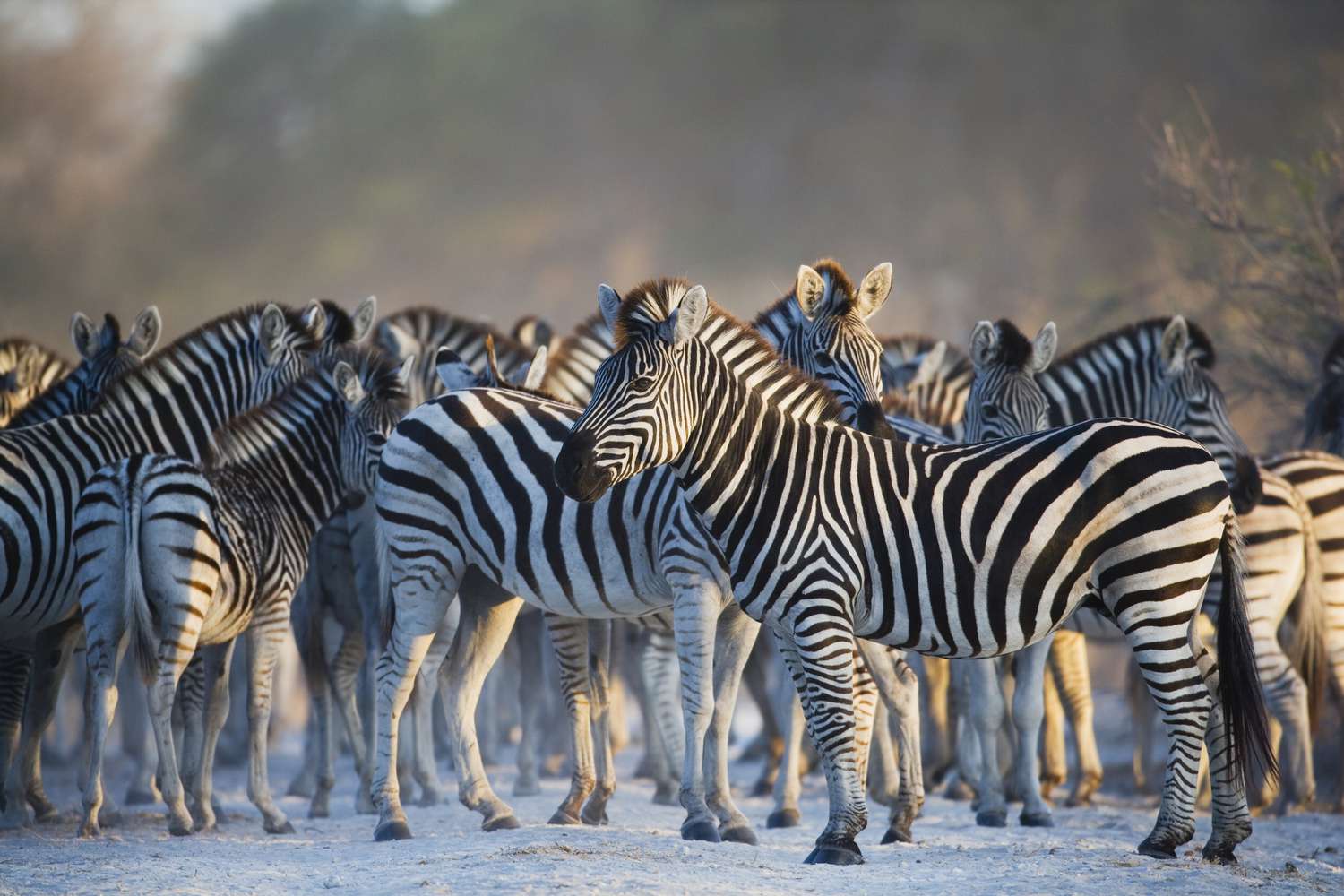
Africa, a continent teeming with diversity and life, offers an unparalleled glimpse into the wild. Home to some of the planet's most iconic animals, its landscapes are a canvas of breathtaking scenes, from the sprawling savannahs to dense forests and arid deserts. African wildlife encompasses a vast array of creatures, each with unique traits and fascinating behaviors. In this blog post, we'll share 24 intriguing facts about these animals, shedding light on their habits, survival strategies, and the challenges they face in today's changing world. Whether you're an animal enthusiast or simply curious about nature, these insights will deepen your appreciation for Africa's majestic wildlife and the delicate balance that sustains it.
Understanding African Wildlife
Africa, a continent bursting with biodiversity, offers some of the most fascinating wildlife experiences on the planet. From the sprawling savannahs to dense forests and expansive deserts, each ecosystem supports a unique array of animals. Let's dive into the facts that make African wildlife so extraordinary.
-
Africa is home to the world's largest land animal, the African elephant. These majestic creatures can weigh up to 7 tons and live up to 70 years.
-
The fastest land animal, the cheetah, also resides in Africa. Capable of speeds up to 75 mph, cheetahs are unparalleled predators in short-distance chases.
-
Lions, known as the "kings of the jungle," actually spend most of their time in grasslands and plains. A pride can consist of up to 30 lions, depending on the availability of food and water.
The Circle of Life
-
The Great Migration is a spectacle unlike any other, where over 1.5 million wildebeest, along with hundreds of thousands of zebras and gazelles, traverse the Serengeti in Tanzania to the Maasai Mara in Kenya in search of greener pastures.
-
Hyenas, often portrayed as mere scavengers, are actually skilled hunters and play a crucial role in the ecosystem by controlling populations of other species and cleaning up carcasses.
-
African wild dogs, with their distinctive mottled coats, are among the continent's most endangered predators. They are known for their highly social behavior and cooperative hunting tactics.
Conservation Efforts
-
Poaching and habitat loss are significant threats to African wildlife. Elephants and rhinos are particularly vulnerable due to the demand for their ivory and horns.
-
Conservation organizations and governments are working together to establish protected areas and national parks to safeguard these species. The Kruger National Park in South Africa is one of the largest game reserves in Africa.
-
Innovative conservation strategies, such as anti-poaching patrols, community-based conservation, and wildlife corridors, are being implemented to ensure the survival of these magnificent animals.
Unique Adaptations
-
The giraffe, the tallest land animal, has a neck that can be up to 6 feet long. This adaptation allows it to reach leaves and buds in the treetops that other herbivores cannot.
-
Camels, though not native to Africa, have been introduced and are vital to human life in the Sahara Desert. Their ability to go for long periods without water makes them perfectly suited to desert conditions.
-
The hippopotamus spends most of its day submerged in rivers and lakes to keep cool under the hot African sun. Despite their bulky appearance, hippos can run faster than humans on land.
The Richness of African Birdlife
-
Africa is a birdwatcher's paradise, with over 2,500 bird species recorded. The continent's diverse habitats support a wide range of birdlife, from the tiny sunbirds to the large ostrich, the world's largest bird.
-
The African grey parrot is renowned for its intelligence and ability to mimic human speech. These parrots can live up to 60 years in captivity.
-
Flamingos create one of Africa's most iconic images with their vibrant pink feathers. They get their color from the beta-carotene in the algae and crustaceans they eat.
The Underwater World
-
The Nile crocodile, Africa's largest freshwater predator, can grow up to 20 feet long and weigh as much as a small car. These ancient reptiles are formidable hunters, capable of taking down almost any animal that ventures too close to the water's edge.
-
Africa's oceans and rivers are teeming with life, including over 3,000 species of fish. Lake Malawi alone is home to more species of fish than any other lake in the world, including hundreds of species of cichlids found nowhere else.
-
The great white shark patrols the waters off South Africa's coast. The region is famous for "shark alley," a popular spot for cage diving and observing these powerful predators up close.
The Importance of Insects
-
Termites, though often seen as pests, are crucial for the African ecosystem. Their mounds aerate the soil and their decomposition of plant material recycles nutrients.
-
The African honeybee plays a vital role in pollination, supporting both wild ecosystems and agricultural crops. These bees are more aggressive than their European counterparts but are essential for the environment.
-
The continent is also home to the tsetse fly, known for transmitting sleeping sickness. This disease affects both humans and animals, highlighting the complex relationship between wildlife and human health in Africa.
The Future of African Wildlife
-
Climate change poses a new threat to African wildlife, altering habitats and food availability. Species that cannot adapt quickly enough are at risk of extinction.
-
Community involvement in conservation has shown promising results. Programs that integrate wildlife protection with benefits for local communities are more successful in the long term.
-
Technology, including satellite tracking and drones, is playing an increasingly important role in monitoring wildlife populations and combating poaching.
A Final Safari Through African Wildlife Facts
We've journeyed across the vast and vibrant landscapes of Africa, uncovering the mysteries and marvels of its wildlife. From the majestic lions, guardians of the savannah, to the elusive leopards and the gentle giants that roam the plains, each creature adds a unique brushstroke to Africa's wild masterpiece. Understanding these animals goes beyond mere fascination; it's about recognizing their role in the ecosystem and the urgent need for conservation. As habitats face threats and species battle for survival, our newfound knowledge empowers us to advocate for their protection. Let's carry these tales of resilience and beauty with us, spreading awareness and fostering a deeper connection with the natural world. Africa's wildlife, with its intricate patterns of life, challenges us to ensure this legacy thrives for generations to come.
Was this page helpful?
Our commitment to delivering trustworthy and engaging content is at the heart of what we do. Each fact on our site is contributed by real users like you, bringing a wealth of diverse insights and information. To ensure the highest standards of accuracy and reliability, our dedicated editors meticulously review each submission. This process guarantees that the facts we share are not only fascinating but also credible. Trust in our commitment to quality and authenticity as you explore and learn with us.


